Tuesday Triage #58
- TUESDAY TRIAGE #58 by Vadim Drobinin
- On going back to basics
- Things I enjoyed reading
- 1. Life is a Picture, But You Live in a Pixel by Tim Urban
- 2. The Yeast Hunters by Laurel Miller
- 3. I won over $55 million in the California lottery, but didn’t tell my friends or family by @Quantanamo
- 4. Bubbles determine the amount of alcohol in Mezcal by G. Rage et al
- 5. How we fixed the ozone layer by Hannah Ritchie
- 6. The hand gestures that last longer than spoken languages by @williamhpark
- 7. All the best emails from the Apple vs. Epic trial by @StarFire2258
- 8. Masking Emotions: Face Masks Impair How We Read Emotions by Monica Gori et al
- 9. A Small Place by Ian Mount
- 10. Things you're allowed to do by @MWCvitkovic
- Things I didn't know last Tuesday
- 1. Act of God
- 2. Mammatus cloud
- 3. Jury service in the UK
- 4. Kangling for chöd
- 5. SWOLF
- 6. Person from Porlock
- 7. Kansas wheat sacks
- 8. US cities' names were required to have at least three letters
- 9. Maid café
- 10. Rat Stew
- Book of the week
- Thank you and see you in a week!
TUESDAY TRIAGE #58
by Vadim Drobinin ¶
Your weekly crème de la crème of the Internet is here!
24.08.2021 (read in browser)
-
Intro
Whatever is on my mind this week. -
Things I enjoyed reading
Ten-ish articles I found worth reading. -
Things I didn't know last Tuesday
Ten-ish facts I didn't know when I wrote the previous edition. -
Book of the week
Some thoughts on the latest book I've read.
On going back to basics ¶
An important qualia for any curious mind is the ability to go back to basics, whether it is to refine the technique or to find missing answers or to get inspired.
For me to some extent it manifests itself in going to cocktail bars.
Being a snob I am, paying a fortune for a mediocre drink might be rather painful. Restaurants somehow upset way less often.
Luckily, these days we can get picky. Sasha took me out to Gibson, where I had, you guessed it, a classic Gibson with a properly pickled onion.
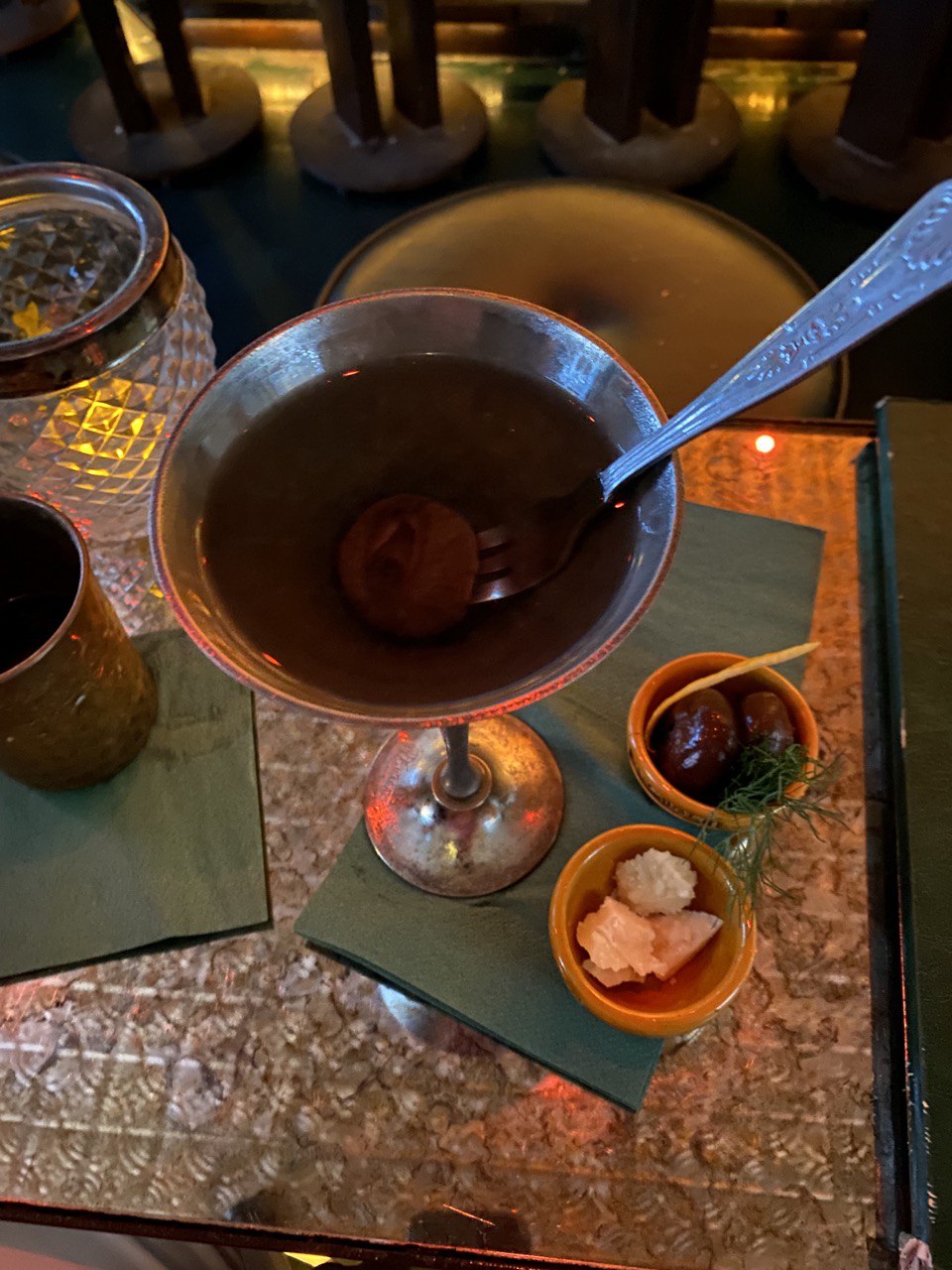
However the place's vibe is more of a wacky travel machine that brings you into 1960's sans smoke outside. Most of their drinks looks like that:
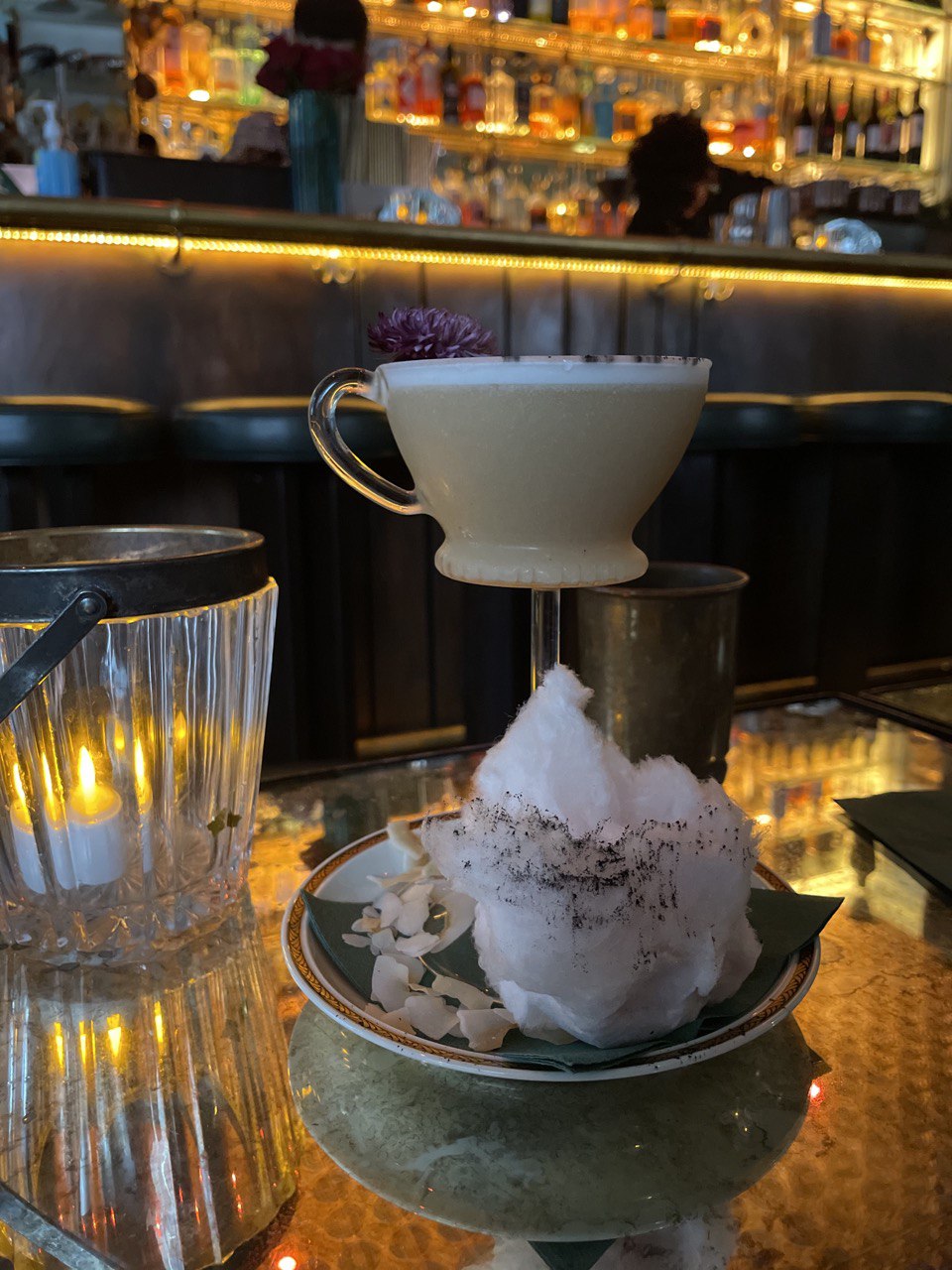
Appealing to eyes and most palettes indeed, but I err on the side of Sahara desert dryness, so we head over to another bar eventually for an unusual riff on White Negroni, featuring apples and absinthe, and some Manhattan-esq cocktail with almond eau de vie.
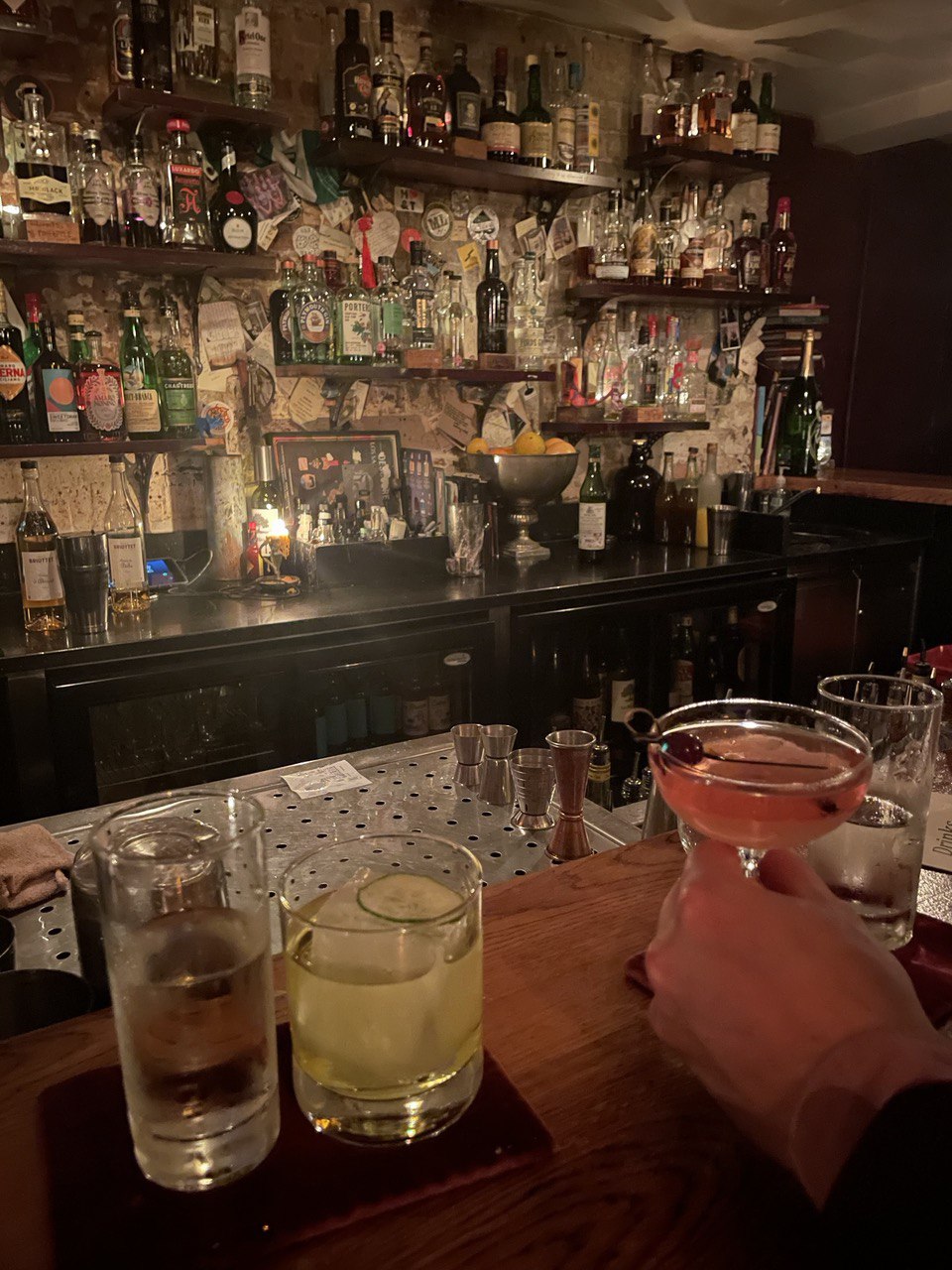
And then wrapped up the night with a few classics: an Espresso Martini and a wild mix of Hanky Panky and Martinez (that's it, two of my favourite drinks in one).
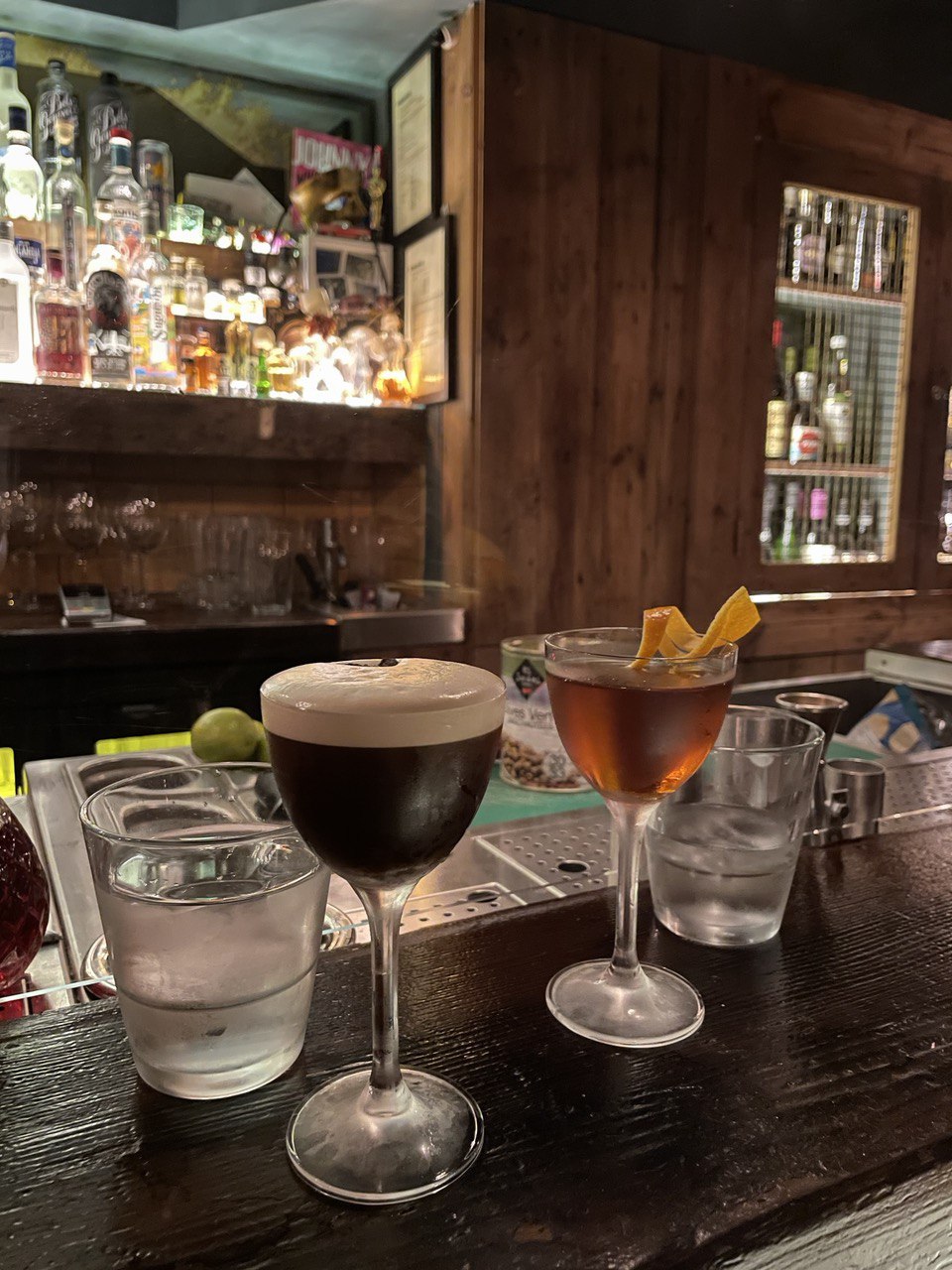
And to conclude my back-to-roots motif, this weekend we made shashlyk which is a quintessence of all things childhood summer:


Next time I should make more.
Things I enjoyed reading ¶
1. Life is a Picture, But You Live in a Pixel by Tim Urban ¶
This is a good reminder for anyone trying to enjoy the life to its fullest.
People love holidays and travelling because it breaks them out of the mundane cycle of work and chores.
This is not different from postponing things until a weekend, or until retirement, or until a raise at work.
That time will come, but Jack has another plan in the meantime—he’s getting a raise next week, and he’s going to break up with his current Today as soon as that happens and start dating someone new—Today Once I Get My Raise. Of course, she’s not the kind of Today worthy of marriage for a guy like Jack, but she’s much more fun and exciting than his current very ordinary Today.
We tend to wait for a better day and just live in the meantime, but in fact our lives mostly consist of these "average" days – so it would be more beneficial to make them more exciting instead.
2. The Yeast Hunters by Laurel Miller ¶
Must be a fun project: stroll around, swab plants, and then collect yeast in jars all over shelves.
The couple, both avid outdoor recreationalists, collect yeast samples by swabbing native plants, fruit and cacti when they’re backpacking or kayaking using proprietary shelf-stable collection kits that do not require picking the plants. In the lab, “The yeast is cleaned up, isolated from any bacteria and then grown as a single pure culture,” explains Young. “If it’s a brewer’s yeast, we test it by fermenting it in small beer experiments. This allows us to taste and document its flavor.” Those specimens that exhibit desirable flavor profiles are then propagated and sold.
I hope they sell beer tasting kits, so people could compare a dozen of different drinks with the only different ingredient being the yeast.
3. I won over $55 million in the California lottery, but didn’t tell my friends or family by @Quantanamo ¶
An interesting perspective on what defines us as humans. Is it money? A job? Something else?
About 10 years ago, I won over $55 million in the California lottery. I never told my parents or my sister, or anyone for that matter. I have kept a low profile. I did buy a new truck and a house, but I told them I was renting the house. Was I wrong to not tell anyone?
Lots of questions, and yet answers most likely differ for different people.
4. Bubbles determine the amount of alcohol in Mezcal by G. Rage et al ¶
I considered sharing this link in Things I didn't know last Tuesday but the article appeared to be even more interesting than its title.
There is an ancient belief used to check mezcal's strength during distilation: pour a think stream into a small vessel and look at bubbles.
Mezcal makers call them "pearls" and think that they should hold on the surface for 30 sec or so. If the burst faster, its ABV is either too small or too high.
The method used to determine the correct alcohol content is of particular interest: a stream of the liquor is poured into a small vessel to induce surface bubbles. These bubbles, known as pearls by the Mezcal artisans, remain stable for tenths of seconds only if the alcohol content is close to 50%. For higher or lower alcohol content, the bubbles burst rapidly.
Some scientists looked into it: used different vessels, different strengths, poured with different angles and speeds, and managed to confirm the belief and explain the science behind it.
Hopefully that means buyers won't be able to convince producers to switch to 40% ABV instead of good ol' classics.
5. How we fixed the ozone layer by Hannah Ritchie ¶
Knowing that the ozone layer is getting worse and worse is something I grew up with. In fact it got way better than it was fifty years ago, and here is a good overview of how it happened.
The success of this international effort was truly stunning. Before the first protocol came into action in 1989, the use of ozone depleting substances continued to increase. But the phaseout that followed was rapid. Within a year, consumption fell 25% below its 1986 levels. Within a decade the levels had fallen by almost 80% (far beyond the initial target of the Montreal Protocol of a 50% reduction). As of today, their use has fallen by 99.7% compared to 1986.
The funniest bit is that most of it seems to happen even before I was born. Not sure I understand where all these talks are coming from then, just some outdated Soviet textbooks or what?
6. The hand gestures that last longer than spoken languages by @williamhpark ¶
There are quite a few hand gestures we deem universal, while for lots of people out there they might mean something completely different.
Gestures that communicate a specific meaning, like "I don't know" or "everything is OK", are called emblematic gestures. "If you look across cultures, these emblematic gestures are used for interpersonal control," says Cooperrider. "They're not used to describe objects. You might imagine that people will have a gesture for water, meat, for running and so on. But that's not the case. These gestures are primarily about trying to manipulate the social world, to get people to stop doing what they're doing or to respond to questions."
Also it's really interesting to see how tracing back gestures in history explains what people were driven by, and which needs they had.
7. All the best emails from the Apple vs. Epic trial by @StarFire2258 ¶
If you are like me and do not closely follow the epic Epic trial that unwraps for another year, I just came across a great summary of the best moments learnt from their private emails so far. Shouting execs, shocked revelations, all of that in abundance.
October 2013: Plastic knife, meet gunfight.
Eric Friedman, now head of Apple’s Fraud Engineering Algorithms and Risk (FEAR) team, says the company’s App Review team is “bringing a plastic butter knife to a gun fight,” a spicy quote you may remember from the trial. It seems that quote was in response to a rather simple scam: Chinese apps requesting that their users give them 5-star reviews, which the App Review team apparently wasn’t catching.
I find these kinds of stories mesmerising to be honest. They prove that there is a world out there, where you could send an email to Tim Cook and actually get a reply. This is actually... motivational.
8. Masking Emotions: Face Masks Impair How We Read Emotions by Monica Gori et al ¶
You might think that the title is quite obvious on its own. It is actually not, and the value of the research is more in methods than conclusions. But also interesting to learn how the younger the person is, the more important is a clear view of the face to understand emotions.
Future longitudinal works are necessary to investigate if the social challenge these children are experiencing will impact their future ability to interact with others. Research should also include more informative and generalizable methods to assess emotion reasoning beyond labeling facial configurations. This exploration will be even more important if the use of masks is extended over time. Notably, we performed our experiments at the beginning of the crisis (within 2 weeks after the first lockdown phase). In this period, the face perception with masks was a new experience for all the participants, and the performance was not affected by experience or previous exposition.
Seems like there is still way more to learn, including understanding how it changes over time, but even now the chances are there are already startups in the making aimed at creating transparent masks and other similar tech.
9. A Small Place by Ian Mount ¶
I'd always thought that the smaller the island is the more native is its population: on the countrary, Falkland Islands is the home to mostly immigrants, and there are lots of attempts to understand why.
But there they were: gaggles of immigrants. Every five years, the islands conduct a census with the Orwellian precision that is possible only on remote islands with a population of 2,478. Besides enumerating statistical curiosities—the number of dishwashers, for example, rose from 130 in 1996 to 338 a decade later—the census notes the surprising facts that only 53.2 percent of the 2006 population was born on the islands, and 25 languages other than English are spoken in Falkland homes.
Personally I thinking moving over there and opening a bar in a Truman-like world is a pretty cool retirement plan. Albeit I am not really happy about being asked whether I have a dishwasher or not every five years.
10. Things you're allowed to do by @MWCvitkovic ¶
An eye-opening post for anyone growing up thrifty: sometimes it is way easier to spend money on something instead of wasting time (as time is way more precious).
...
- Hire a graphic designer to turn your appalling sketches into beautiful diagrams or slides
- Host small gatherings or conferences on topics you care about
- These are much easier to set up than you’d think, especially in the age of Zoom
- If you can use the gathering to bootstrap a group chat or community, so much the better!
- Hire a tutor
It's hard to quote a specific example; however anything learning-related might be significantly simplified with someone's help. It shouldn't apply to hobbies though: if you enjoy drawing slides, or cooking, or fixing a broken chair, then keep enjoying it.
Things I didn't know last Tuesday ¶
1. Act of God ¶
Reading through a consulting contract I came across a force majeure clause saying that the contract will be void in case of "acts of God".
So here I am, learning that this is a common way to define unpredictable nature events like floods.
Some systems limit force majeure to an Act of God (such as floods, earthquakes, hurricanes, etc.) but exclude human or technical failures (such as acts of war, terrorist activities, labor disputes, or interruption or failure of electricity or communications systems). The advisory point is in drafting of contract make distinction between act of God and other shape of force majeure.
Which raises a question about pandemics.
2. Mammatus cloud ¶
Mammatus is a cellular pattern of pouches hanging underneath the base of a cloud, typically a cumulonimbus raincloud, although they may be attached to other classes of parent clouds. The name mammatus is derived from the Latin mamma (meaning "udder" or "breast").
Is it OK to have a favourite cloud?

Not that common in the UK but apparently the Met Office even issues a reminder when they could show up.
3. Jury service in the UK ¶
Until today I didn't know that there is a jury service in the UK.
If you get a jury summons in the post, you must respond within 7 days and confirm if you can attend.
Your name was chosen randomly from the electoral register.
I guess it is still better than a year of mandatory army service.
4. Kangling for chöd ¶
Despite a cheesy website, both the fact and the whole article behind it are worth reading:
A kangling is a trumpet made from a human thigh-bone. You play a kangling in tantric Buddhist rituals, particularly chöd.
Apparently Buddhists use it as a reminder of the fleeing nature of life:
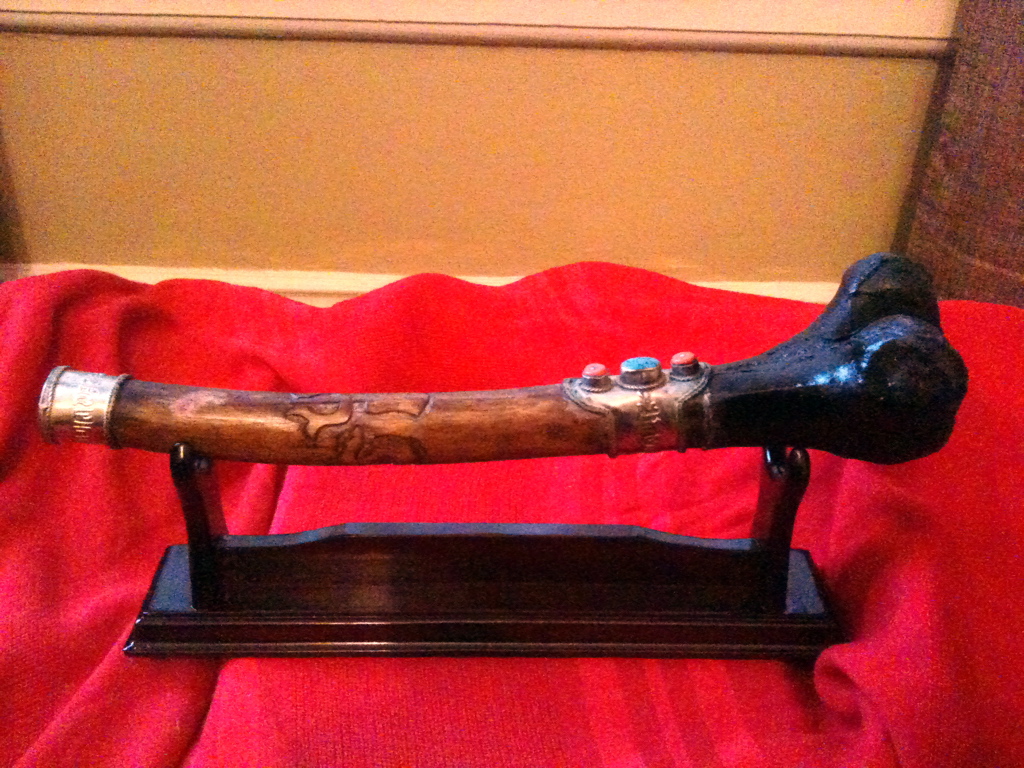
Let me repeat, this is a trumpet. Out of a human bone.
Somewhat I was exposed to a slightly different Buddhism at yoga sessions.
5. SWOLF ¶
Apparently that's a common way to measure one's swimming efficiency.
SWOLF is the combination of your stroke count and time taken in the water and is often used as a measure of your swimming efficiency.
“Swimmers have been adding these two numbers together for years and thinking of it as ‘Swim Golf’ or SWOLF, because lowering the score is the objective,” says Bullock.
So SWOLF is time plus stroke count, and usually it is taken for a fixed swimming pool length (e.g 25 metres). Not the easiest metric to compare though: different techniques would procude very different numbers. Still better than just time.
6. Person from Porlock ¶
Someone disrupted a poet and ended up in 18th century memes:
Kubla Khan, only 54 lines long, was never completed. Thus "person from Porlock", "man from Porlock", or just "Porlock" are literary allusions to unwanted intruders who disrupt inspired creativity.
I didn't manage to find how it gets translated into other languages though, and knowing Russian writers circa 19th century they most likely lacked that context without Wikipedia, so generations of scholars most likely had to come up with multiple (invalid) reasons explaining why someone brings up a British village out of nowhere.
7. Kansas wheat sacks ¶
A company that used to make wheat sacks eventually started to make them coloured as they learnt that people turn sacks into clothes:
Sacks were stitched along one side and across the bottom with a simple chain stitch so that stitching could be removed by clipping the top loop and pulling out the entire line of stitching very quickly. The string could be saved for other uses. More effort was made to use logo inks that were easily washed out. A few bag manufacturers printed patterns for dolls, doll clothes, and other items on the backs of the feed sacks. Items could be cut directly from the sack and quickly sewn.
These days there are legitimate questions about the original motivation behind it, but whether it was generousity or marketing, they managed to achieve both goals to a great extent.
8. US cities' names were required to have at least three letters ¶
There is a town in Arizona called "Why", which used to be just "Y" but seems like the States weren't happy with its name's length.
The town derives its name from the fact that two major highways, State Routes 85 and 86, originally intersected in a Y-intersection. At the time of its naming, state law required all city names to have at least three letters, so the town's founders named the town "Why" as opposed to simply calling it "Y."
Did it apply to regular names as well? What's the share of population named one or two letters names? Now I have to know.
9. Maid café ¶
An odd idea but I guess it has its own fans. Can't really complain given that in Russia people literally pay for time, so they could sit in a room with friends (and not in the forest with bears as you might guess).
Maid cafés are a subcategory of cosplay restaurants found predominantly in Japan. In these cafés, waitresses, dressed in maid costumes, act as servants, and treat customers as masters (and mistresses) in a private home, rather than as café patrons.
Wonder how many unaware tourists freaked out visiting them for the first time.
10. Rat Stew ¶
Every time folks from the other side of the pond would mock British cuisine, I felt that they have some fair points: burgers are indeed superior to deep fried Mars bars.
However now the tables will be turned:
Rat stew is a traditional American dish originating from West Virginia, where people use various traps, never poison, to catch the key ingredient for the stew – a rat. Once they've been cleaned, skinned, and chopped, pieces of rat meat are dropped into a broth with garlic, wild onions, and similar local vegetables.
Also if you search for "Rat stew", the first link on Google points to the Ratatouille article.
Do they know something? Hopefully I didn't miss a sequel.
Book of the week ¶
I am still on the journey of exploring chefs' monographs, and most of them are indeed real gems. This one was created in a hidden Slovenian valley next to the Italian border, and whn it was published a year ago the restaurant didn't have any Michelin stars.
Today it has two, and Ana Roš' Ana Ros: Sun and Rain is a great way to learn what could be the reason.
But really, I wanted bread with a story - bread rooted in tradition. I wanted to understand how people in remote mountain villages would make it hundreds of years ago, when relatively expensive items weren't on hand to help. I decided to ferment apple peels - this being the only fruit available in the valley in winter time - with flour and spring water. When I baked my first loaf a few months later, it was full of mistakes: hard, chewy and too sour.
My children begged me to just give them 'normal' bread.
I brought a loaf to my mother-in-law. She did not discuss the quality, she simply asked me how I made it. She smiled. Without ever asking, I knew I had begun my journey to bring her grandmother's bread back to life. After four years of hard work and dedication, and with the love of Francesca, an Italian woman who takes care of the bread - four years of looking to the sky - we have one of the most incredible breads I've ever tasted. It is now rooted deep in strong traditions, but with the eye to the future.
The beauty of such books is not in essays, stories, photos, or even recipes – it is in the inspiration and clues to the creativity that are scattered all over their authors. The clues are in landscapes and people around, words eavesdropped from the kitchen, accidental mistakes and unexpected results.
Walking paths of these people would take multiple lifes, but even printed copies are good enough.
On average people read five books a year, which means most of us have to choose these 250-350 books we will have a chance to finish in our lifetimes without ever knowing what goes in all the rest.
Make them count.
Thank you and see you in a week! ¶
If you have any questions, or want to suggest a link for the next newsletter, please drop me a message on Twitter or reply to this email.
Cheers! 🍸